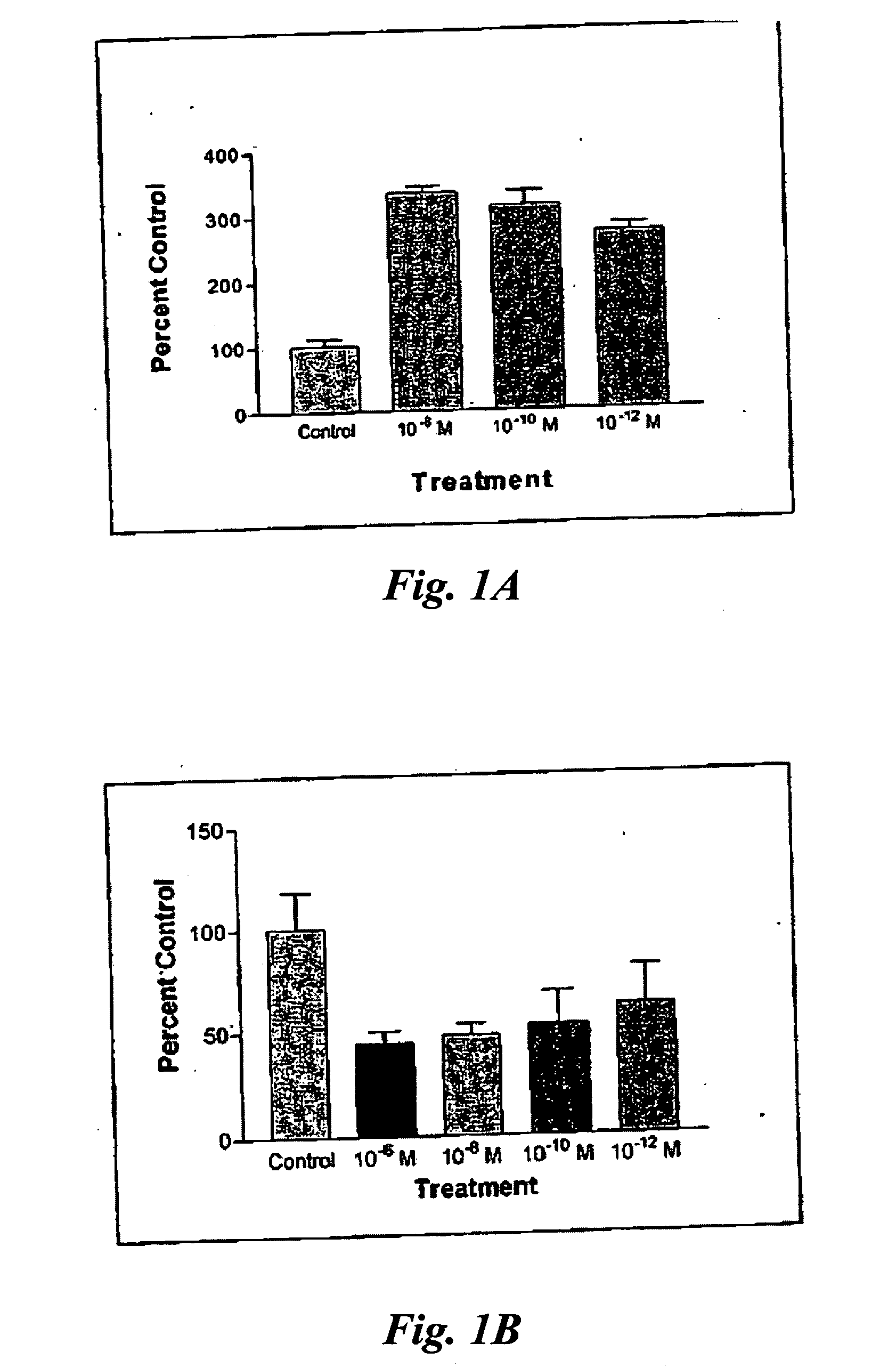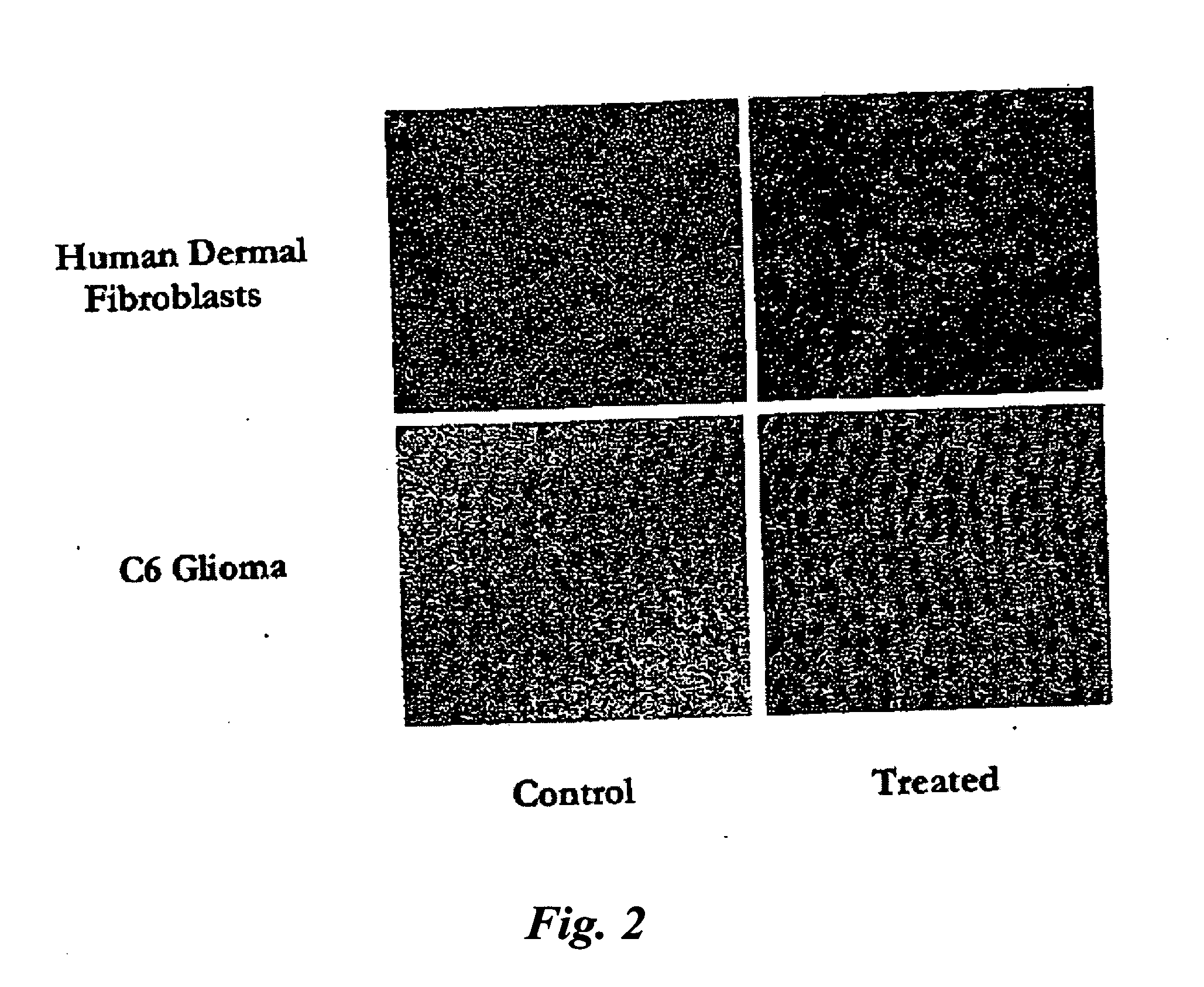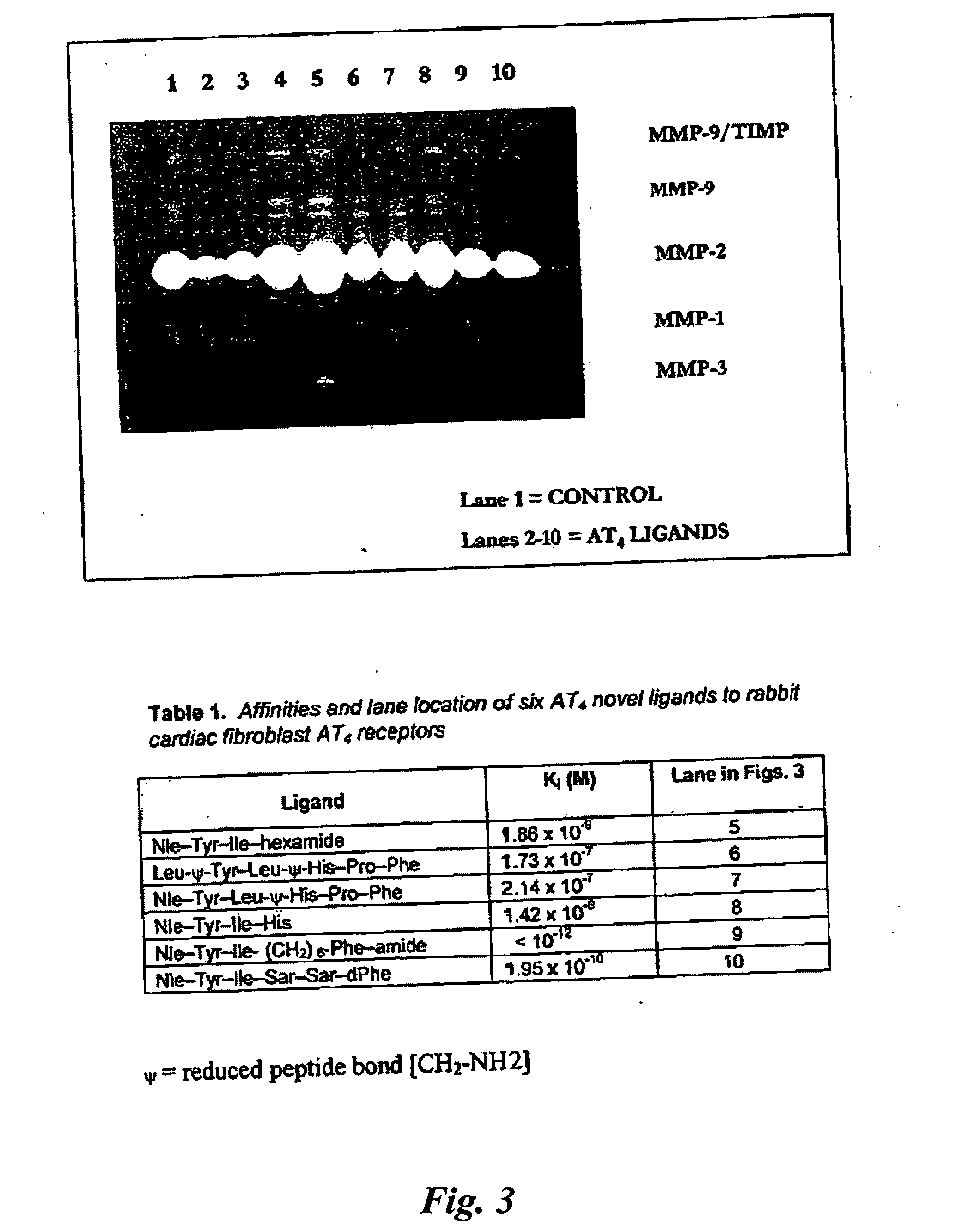AT4 receptor ligands as angiogenic, anti-angiogenic, and anti-tumor agents
a technology of at4 receptors and ligands, applied in the direction of angiogenin, peptide/protein ingredients, drug compositions, etc., can solve the problems of devastating side effects of classic therapies, lack of improvement in survival rates for most cancers, and compromised immune function
- Summary
- Abstract
- Description
- Claims
- Application Information
AI Technical Summary
Benefits of technology
Problems solved by technology
Method used
Image
Examples
Embodiment Construction
[0025] The potential ability of AT4 receptor ligands to alter the angiogenic process was first suggested by the observation that the agonist, Nle1-AngIV can augment the rate of 3H-thymidine incorporation in cultured bovine coronary venular endothelial cells (CVEC) (Hall et al., 1995). These initial observations were extended to human endothelial cells (FIG. 1A) where application of the high affinity agonist, Nle1-Ang IV (Sardinia et al., 1994; Wright et al., 1999), produces a dose-dependent increase in growth. Human umbilical vein endothelial cells (HUVEC) were grown in EGM (Clonetics) and 10% calf serum for four days in the absence (control) or presence of 10−8 M, 10−10 M, or 10−12 M Nle1-Ang IV. Cell proliferation was estimated by monitoring mitochondrial activity with the redox-sensitive substrate 3-[4,5-Dimethylthiazol-yl]-2,5-diphenyltetrazolium bromide (MTT) (Carmicheal et al., 1987). These data demonstrated that Nle1-Ang IV stimulated endothelial cell proliferation at all dos...
PUM
 Login to View More
Login to View More Abstract
Description
Claims
Application Information
 Login to View More
Login to View More - R&D
- Intellectual Property
- Life Sciences
- Materials
- Tech Scout
- Unparalleled Data Quality
- Higher Quality Content
- 60% Fewer Hallucinations
Browse by: Latest US Patents, China's latest patents, Technical Efficacy Thesaurus, Application Domain, Technology Topic, Popular Technical Reports.
© 2025 PatSnap. All rights reserved.Legal|Privacy policy|Modern Slavery Act Transparency Statement|Sitemap|About US| Contact US: help@patsnap.com



